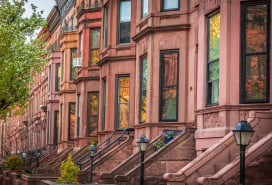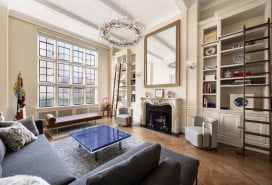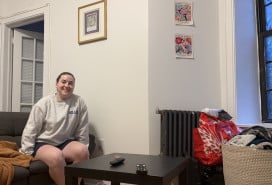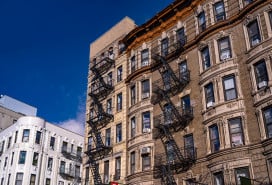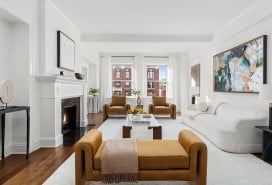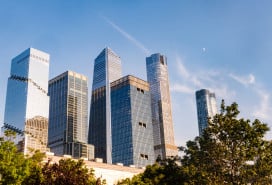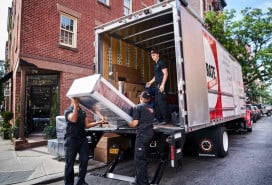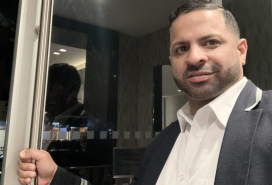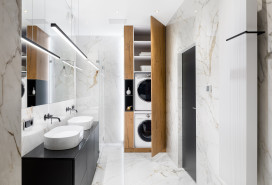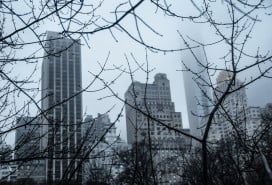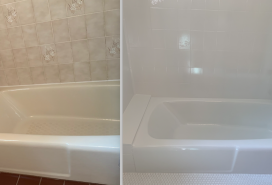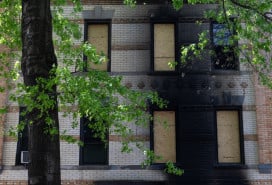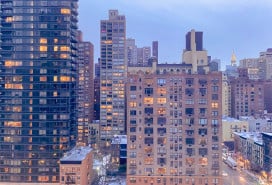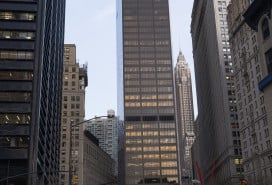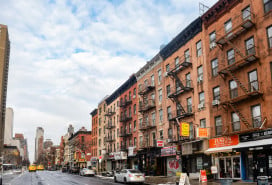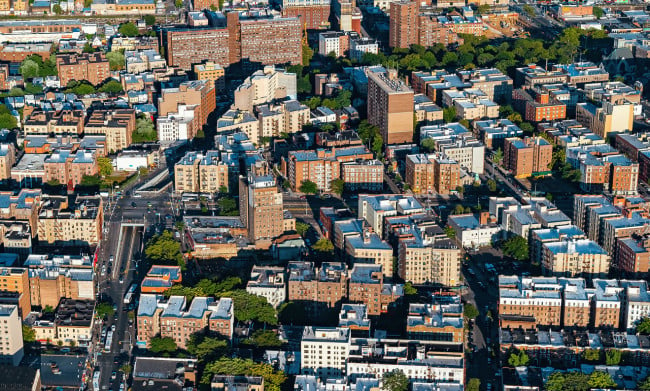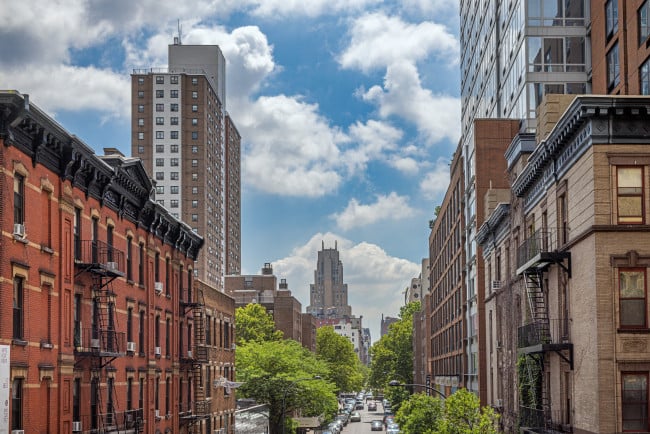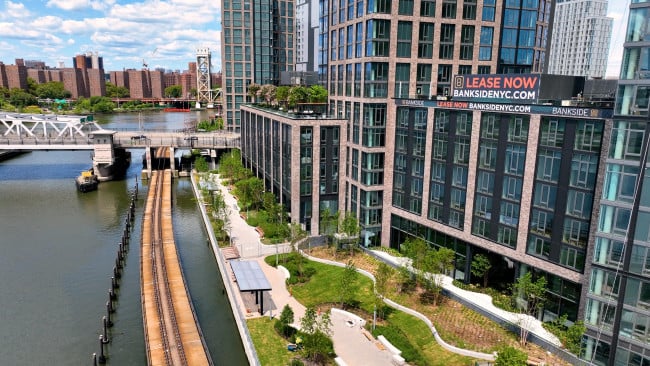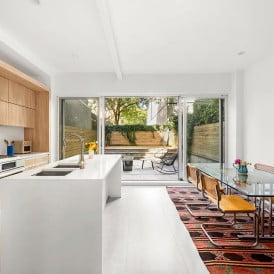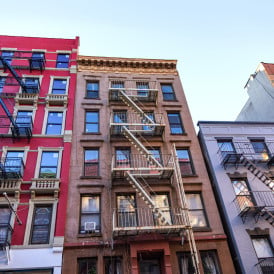New development is rapidly transforming Gowanus. Here’s what renters and buyers can get
- Marketproof is currently tracking 141 new residential projects in the neighborhood
- New rental buildings here command a 35 percent premium over older buildings
- Developments include permanently income-restricted and affordable units
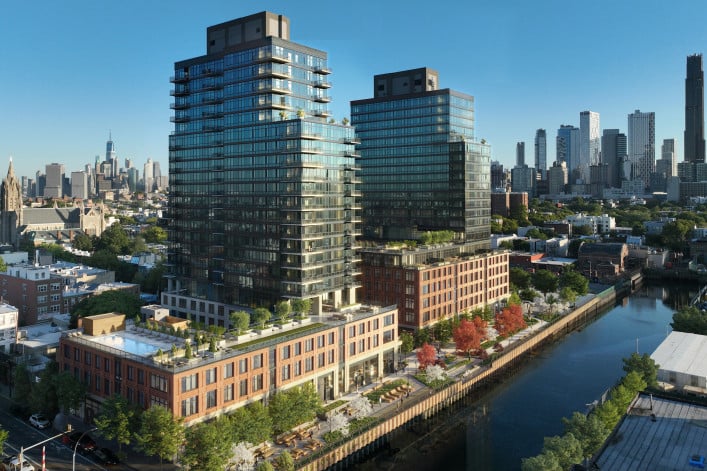
Among the newest rental buildings to open in Gowanus is Society Brooklyn: two, 21-story towers at 500 Degraw St. and 504 Sackett St. with 517 rental units, of which 25 percent is affordable housing.
PMG
With a location sandwiched between Park Slope and Carroll Gardens, you might think that real estate developers active in Gowanus would be touting its proximity to two of Brooklyn’s most expensive and desirable neighborhoods.
After all, until recently, edgy, gritty Gowanus—with its warehouses, empty lots and once-odorous canal, the site of an ongoing Superfund cleanup—seemed stuck as the rest of Brooklyn saw a development boom.
But these days, as Brooklynites make their way past construction sites to art studios, laid-back bars, pickleball, ax throwing, or even Whole Foods—the neighborhood has become a destination in its own right—and the canal is significantly cleaner. Many renters are paying a premium to live in fully amenitized new buildings as the neighborhood undergoes a major transformation with even more new projects on the way.
6,700 apartments in the pipeline
Marketproof, a real estate analytics company, is currently tracking 141 residential projects in the area: 44 have received a temporary certificate of occupancy or certificate of occupancy and the remaining 97 are in pre-construction or under construction.
In terms of new residential units for Gowanus, the firm is tracking roughly 6,700 units in pre-construction or under construction without a CO. Another approximate 3,100 units are in buildings that have received a TCO or CO, according to Ning Zhou, chief technology officer and co-founder of Marketproof. (The majority are rentals however these figures include a small number of condos.)
Construction year | Rent per square foot | Premium |
Gowanus 2018 or after | $77.42 | 34.87 percent |
Gowanus before 2018 | $57.40 | |
Brooklyn 2018 or after | $76.32 | 21.91 percent |
Brooklyn before 2018 | $62.60 |
Source: Marketproof
New rental buildings in Gowanus—built in 2018 or later—command a 35 percent premium over older buildings, Zhou said, with an average rent per square foot of $77.42.
“It’s significantly higher than the 22 percent premium seen across Brooklyn overall,” Zhou said.
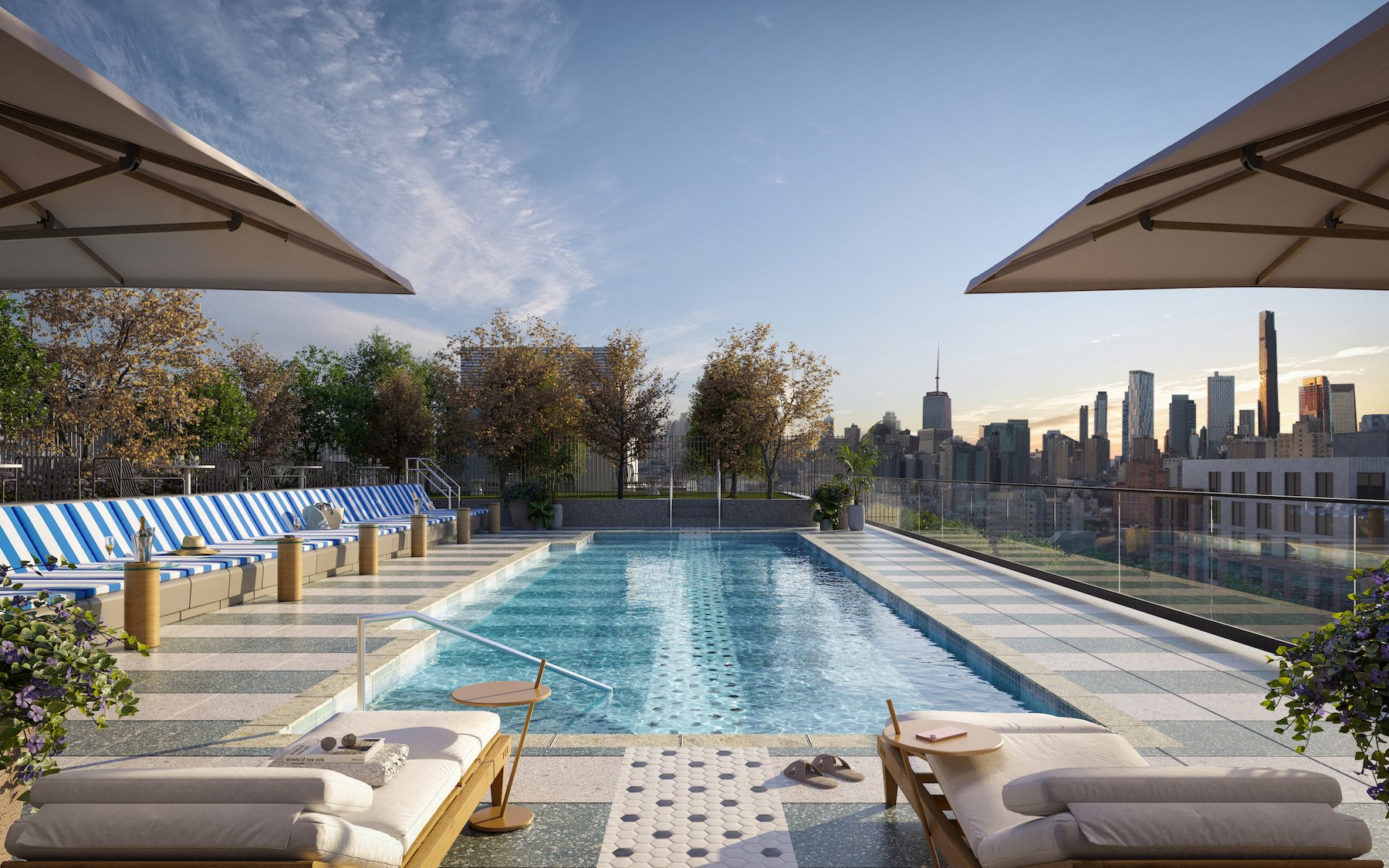
‘Leaning into Gowanus’
Developers active in Gowanus say they are confident about the neighborhood’s appeal to renters from Brooklyn and beyond.
Andrew Steiker-Epstein, chief data officer and brokerage president at Charney Companies, a development and real estate management company, said the firm is “leaning into Gowanus,” rather than talking about Park Slope when marketing Union Channel, a new 224-unit rental development at 240 Third Ave., with 25 percent designated as affordable housing and a pool on its roof (opening soon).
It is the first of four new buildings in Gowanus from co-developers Charney Companies and Tavros Capital to reach completion.
Union Channel started leasing in January and is almost 50 percent leased, Steiker-Epstein said. Units range in size from approximately 400 to 1,200 square feet, with rents for studios starting at $3,150 and going up to $7,000 for a three bedroom.
“We do talk about it being centrally located, but we really believe in Gowanus itself,” Steiker-Epstein. “It’s a real destination and it keeps getting better.”
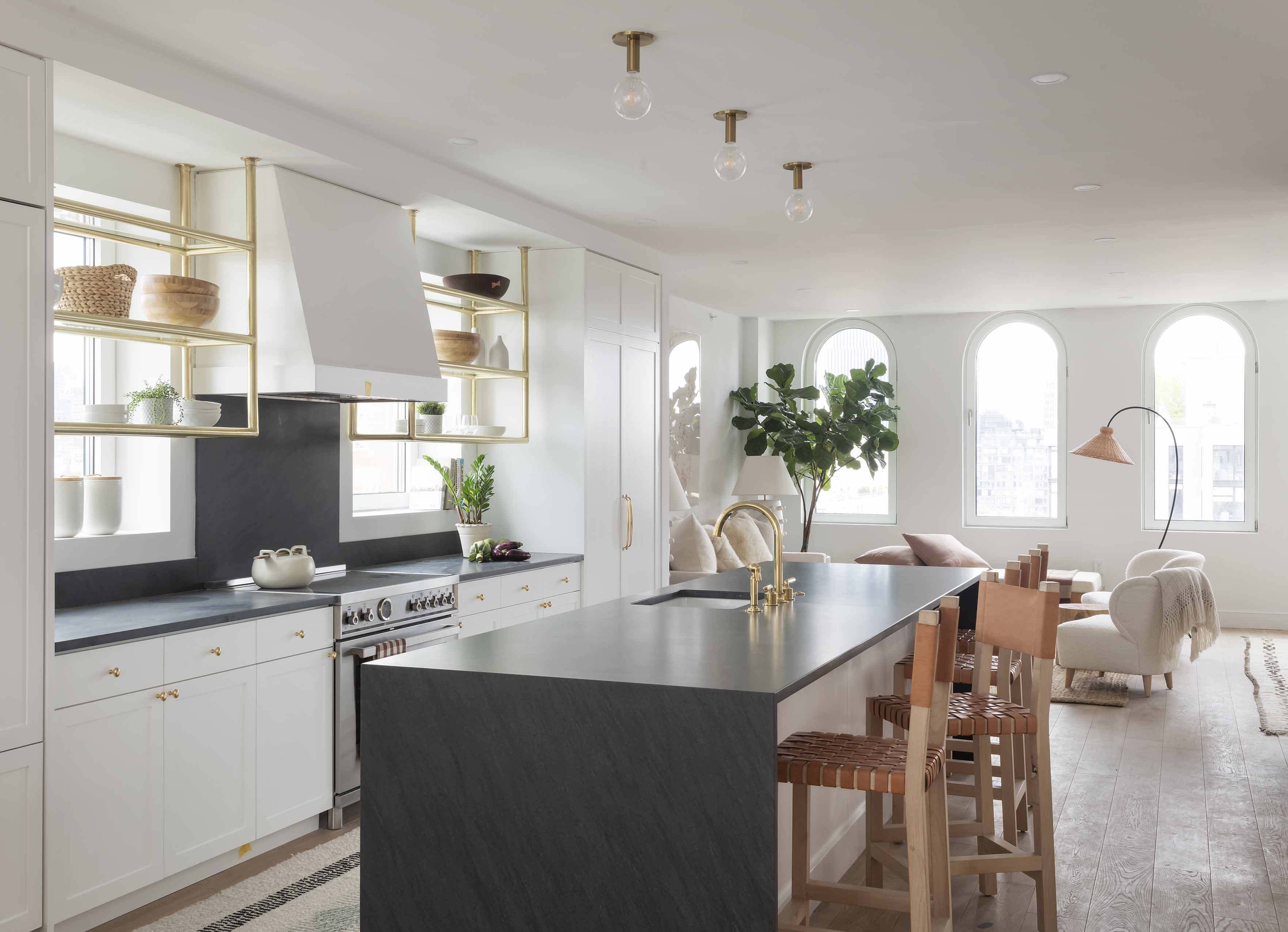
A recent snapshot of Gowanus
Artists and small businesses moved into Gowanus’s relatively cheap warehouses after the Gowanus Canal was designated a Federal Superfund site in 2010 and interest in developing the neighborhood subsequently stalled.
The EPA began dredging the canal in 2020, removing contaminated sediment 10 feet deep and since then the effort has met several major milestones. A sewer overflow tank excavation was completed ahead of schedule this spring, according to the website for the Gowanus Canal Conservancy.
In 2021, the city approved a rezoning of 82 blocks in Gowanus that is expected to create 8,500 new housing units with 3,000 designated affordable housing, as well as a new 1.5 acre park, new waterfront open spaces, and support for the canal cleanup, among other neighborhood improvements.
Since then, the pace of development unleashed by the Gowanus rezoning has been startling, even to the developers themselves.
Bill Caleo is the co-founder of The Brooklyn Home Company, which recently completed 350 Butler, a Gowanus condo building that has only one unit left after launching sales two years ago. He has lived in Park Slope since 2003.
“I cannot believe the changes in the last two years,” he said, adding that he has “never seen so much development.”
In the past, visions for the transformation of Gowanus seemed somewhat farfetched, considering the challenges. This was an area that in 2012 saw Hurricane Sandy’s floodwaters reach three feet above street level, and six feet in more vulnerable locations.
“No one would believe it, but it is finally happening and people want to be a part of it,” Caleo said. He said that buyers are drawn to the energy of the area.
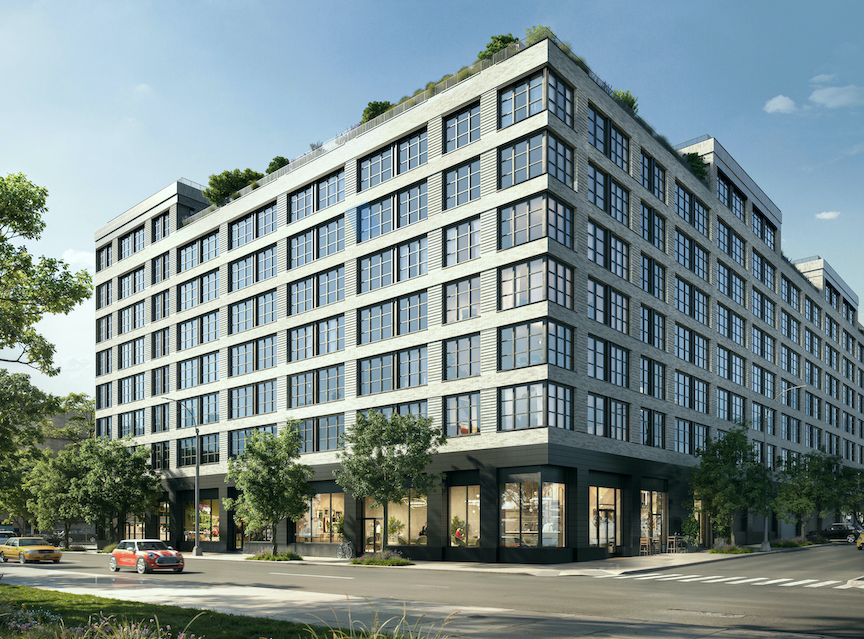
Will Gowanus retain its edgy vibe?
With so much development underway, what will become of Gowanus’s artsy vibe?
“It’s a natural concern,” Joe Porritt, director of leasing at The Brodsky Organization, which is behind the new rental project at 499 President St. with 350 rental units total, including 88 affordable units in a now-closed housing lottery.
"We’re taking steps so that growth doesn’t come at the expense of character,” he said. That’s the thinking behind some of the design decisions at 499 President, including a lower, wider profile for the façade—to better fit the scale of the tree-lined block.
Boosting the neighborhood is part of the firm’s Brodsky Neighbors program, which offers promotions and exclusive offers from local businesses and arts organizations.
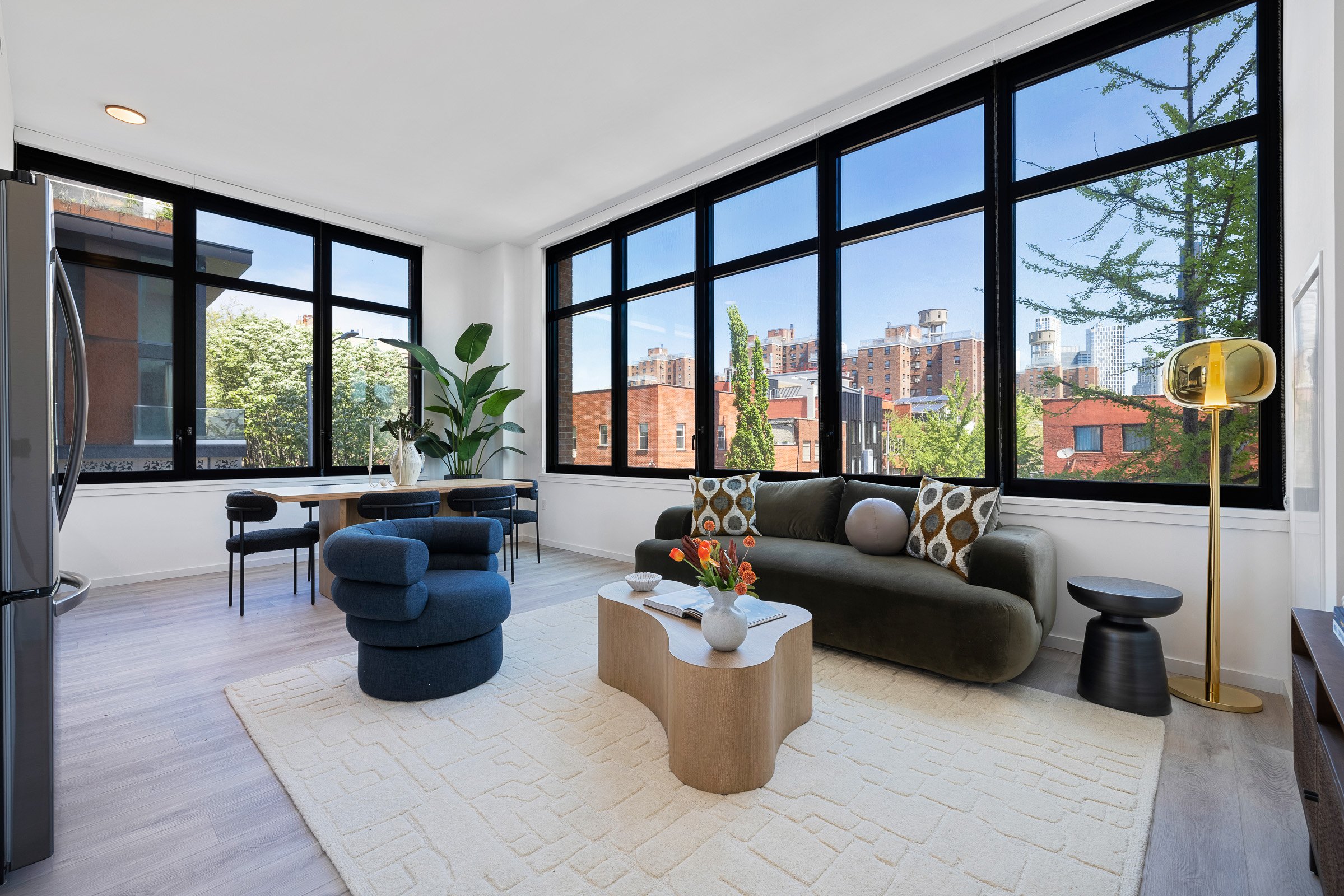
Protecting artists and community members
As part of the rezoning, Arts Gowanus, a group that advocates for affordable artist space, negotiated a community benefits agreement to set aside about 120 subsidized artist studios at over a dozen development sites. The CBA also established a 2,000-square-foot community arts center with an exhibition space and three residency studios.
“The CBA will provide the art studios and the art center in perpetuity even if the properties or future buildings are sold, creating long-term affordability for artists,” Arts Gowanus’s website states.
“The average person doesn’t know there’s zoning protecting artists in Gowanus,” Steiker-Epstein said. Ensuring that there are places for artists will be a mix of policy and the responsibility of developers, he said, adding that the company commissioned murals and is providing vacant space to Arts Gowanus.
The collaboration between the private and public sector “is an example of urban planning done correctly,” said Dan Kaplan, managing partner of developer PMG.
The firm just announced the opening of Society Brooklyn: two, 21-story towers at 500 Degraw St. and 504 Sackett St. with 517 rental units, of which 25 percent is affordable housing. Rents range from $3,500 for a studio to $12,000 for a three bedroom.
PMG invested in the Gowanus area starting in 2011 and Kaplan himself has been involved for years in the effort to support the rezoning, giving up his weekends to attend planning seminars, meet with stakeholders, and paddle a canoe along the canal.
One major consideration, he said, was “who might be excluded as a result of the rezoning and find re-entry points through the inclusion of affordable housing.”
Affordable housing at Society Brooklyn and other new projects is part of the Mandatory Inclusionary Housing program, a 2016 de Blasio initiative that ensures a share of new housing in communities rezoned for growth is permanently income-restricted and affordable. The program requires that new construction, enlargement or conversion above 10 units and 12,500 square feet include a set percentage of permanently income-restricted affordable housing.
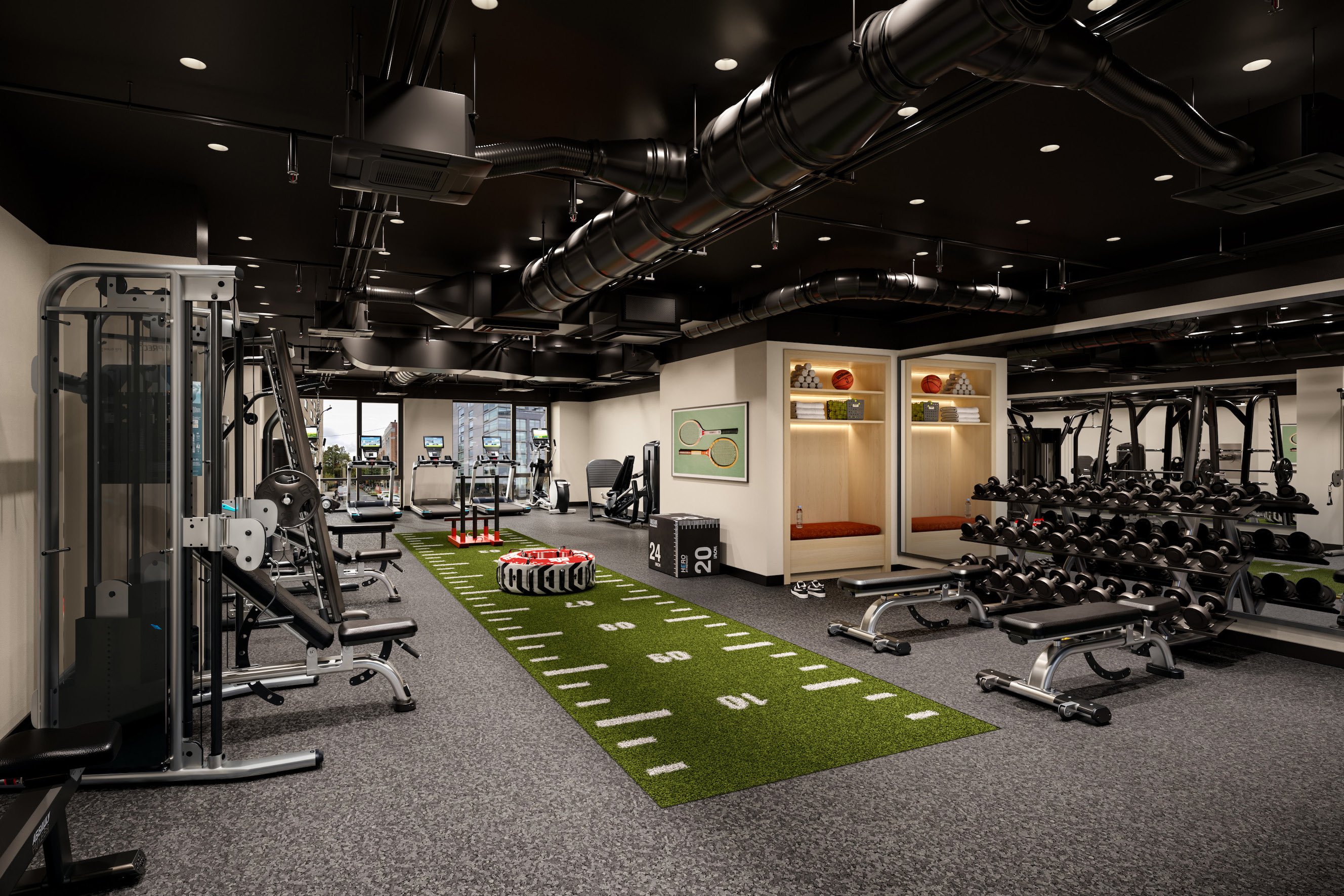
A more luxurious rental product
The new rental buildings are bringing a much more amenitized lifestyle to the neighborhood. That’s typical for developers working in rezoned neighborhoods in NYC’s outer boroughs, where they can dedicate more space to recreation than developers in Manhattan.
The goal is to create “vertical cities,” Kaplan said. For example, each of the towers at Society Brooklyn has a pool, sun decks, co-working spaces, and gym. There’s also a theater, children’s playroom, garden deck, and roof terrace with views of the canal.
Society Brooklyn also provides access to a public waterfront park and esplanade designed by SCAPE, as well as 13 local artist studios in a roughly 4,000 square foot complex managed by Arts Gowanus.
Longview, a 197-unit building at 380 Fourth Ave., which began leasing in April, has a long list of indoor and outdoor amenities totaling 30,000 square feet: a 15th floor lounge, private dining room, co-working spaces, fitness center, game room, children's playroom, private WFH office pods, and golf simulation room. There is an attended lobby, concierge, 24-hour package room, and parking garage.
Outdoor amenity spaces include a 3,600-square-foot roof deck with barbecues, shaded dining areas, wet bar, dog run, and lounge chairs. There’s a 1,600-square-foot landscaped terrace with dining and private party space, lounge seating, gas firepits, outdoor gym, and dog run.
Then there are the amenities at 499 President, where rents start at $3,150 for a studio: There’s a golf simulator, gaming room, outdoor pool, grills, fitness center, and pet washing station. There are numerous incentives as well to encourage renters to sign leases, such as $1,000 off security deposits for qualified applicants and a free month. Units are also available furnished.
The incentives were created to encourage early move ins, as the building is still awaiting its final certificate of occupancy.
The building’s outdoor space sets it apart from other developments, Porritt said. It has an entrance via a garden courtyard and there is a communal vegetable garden on roof, plus a meditation garden.
Porritt said that many renters are coming from Gowanus and other parts of Brooklyn and they’re already familiar with the neighborhood.
“As opposed to other sites in Brooklyn, prospects do come with knowledge of the area and they know about the cleanup. The learning curve isn’t the same,” he said.


